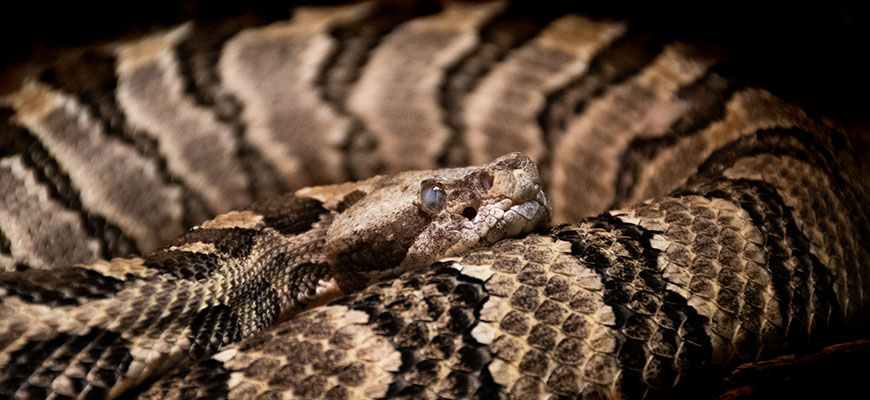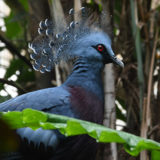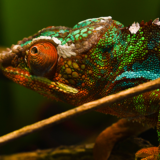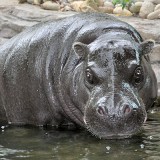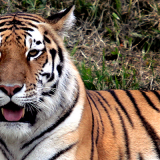RANGE
Southern Minnesota, southern New Hampshire, south to east Texas and north Florida.
HABITAT
Remote wooded hillsides with rock outcrops in the North; unsettled swampy areas, mountains, canebrake thickets and floodplains in the South; sea level to 6,600 feet.
SIZE
Length: 35 – 74 ½ inches.
LIFE EXPECTANCY
30 years
REPRODUCTION
- Mates in summer.
- Female gives birth every other year to 5 –17 young. Young average between 10 to 13 inches long and hatch in late August to early October.
- Females reach sexual maturity in 4 – 5 years.
BEHAVIOR
- Active April to October, in the daytime during the spring and fall, but during the summer they are active at night
- In northern areas they congregate in large numbers around rocky dens and may overwinter with rat snakes and copperheads.
DIET
Wild: Squirrels, mice, chipmunks, small birds.
Zoo: Mice and rats
STATUS
Widely extirpated in areas in which it was formerly common.
POINTS OF INTEREST
- Northern forms range from yellow through brown or grey to black, with dark and side blotches on the front of the body and blotches fused to form crossbands on the rear of body. Head unmarked.
- Southern forms are yellowish, brownish, or pinkish-grey, with tan or reddish-brown back stripe dividing chevron-like crossbands; dark stripe behind eye. Both forms have black tail.
- Fangs: they have curved, retractable hollow fangs situated near the front of the upper jaw. Normally folded back along the jaw, the fangs are rapidly swung forward as the mouth is opened to strike.
- A heat-sensitive pit, used to locate warm-blooded prey, is present on each side of the head between the eye and the nostril.
- They also have eyes with vertical pupils and an individual row of scales under the tail.
Rattlesnakes bear a distinctive rattle on their tail. This unique structure is a series of flattened, interlocking dry horny segments that produces a buzzing noise when shaken vigorously. A new segment is added each time the snake sheds its skin, normally 2–4 times a year. It’s not true that you can tell the age of a snake by the number of segments on its tail. - Viperids appear to be the most highly evolved snakes and are formed for capturing, killing and ingesting relatively large prey.
- Their venom is a complex mixture of proteins, which acts primarily on a victim’s blood tissue.

